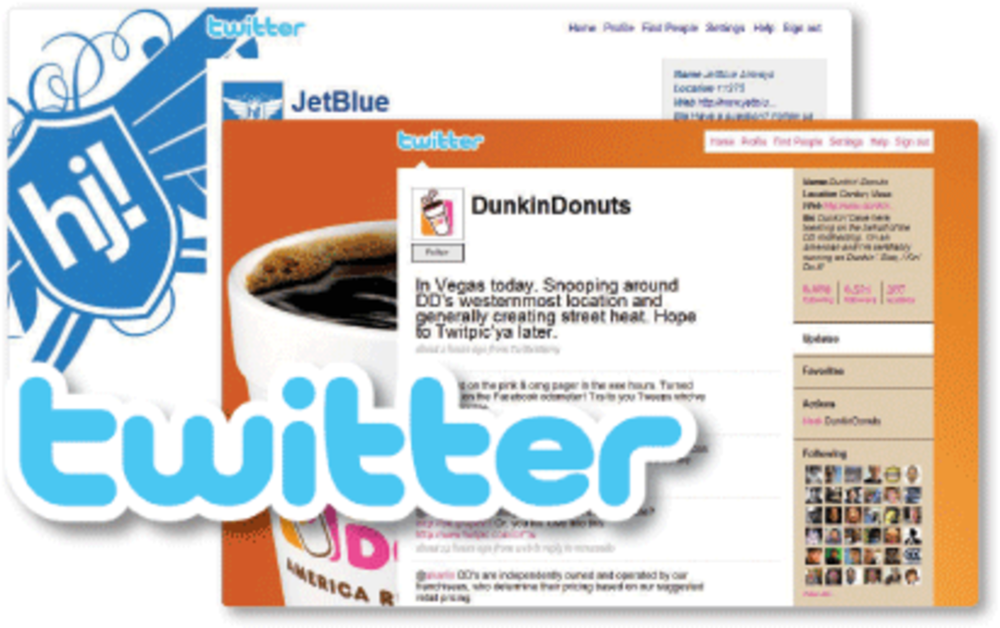Free microblogging site Twitter announced plans to begin revenue-generating products. The impact on marketers remains to be seen as news of the revenue model has been vague.
Twitter co-founder Biz Stone referred DMNews to a corporate blog written on February 13, announcing the company will receive additional funding from Benchmark and Institutional Venture Partners (IVP). IVP confirmed the amount was $35 million.
Stone’s post explained, “We are now positioned extremely well to support the accelerating growth of our service, further enable the robust ecosystem sprouting up around Twitter, and yes, to begin building revenue-generating products.”
Twitter is also backed by Union Square Ventures, Digital Garage, Spark Capital and Bezos Expeditions, which is run by Amazon CEO Jeff Bezos.
The launch of an ad-supported model for the site had long been predicted by experts.
On February 12, Joel Comm, CEO of InfoMedia Inc. and author of Twitter Power, a guide for marketers using the site, told DMNews, “I think the ad model is still solid.” He also didn’t rule out an eventual buyout.
“It could be a huge payout for them, even when they get up to 10 million members,” Comm said.
Twitter has about 6 million unique users. It had the third highest number of monthly visits — 54 million — among social networks in January, behind Facebook and MySpace, according to Web analytics firm Compete. At this time last year, Twitter was ranked 22.
Any change to the site’s services could have an impact on the growing number of brands, such as Dunkin’ Donuts, Zappos, Whole Foods, Dell and JetBlue, that already use it.
It’s unclear how much marketers would spend to remain using the one-to-one customer communication outlet. Brands using the service have not yet tied it directly to sales goals.
Dunkin’ Donuts, which began Twittering in October 2008, said it includes brand updates and interesting news, and often replies to other Twitterers’ Tweets.
“We follow what others are saying as well. Twitter is not a broadcast channel – it’s a place to have conversations,” said Michelle King, director of global PR for Dunkin’ Brands Inc. “Dunkin’ Donuts is using Twitter as a means to engage in a meaningful dialogue with our consumers.”
JetBlue Airways started Tweeting in May 2007 by posting new routes and fare sales. But the airline now has more of a two-way conversation with those Twitterers who are talking both to them and about them, said Morgan Johnston, manager of corporate communications for the airline.
“We became much more conversational and tried to engage the community not so much as a billboard [but] as an information booth,” Johnston said. “We were looking for a way to be more transparent.”
The service also has provided companies with real-time market and brand perception research. Marketers can use search.twitter.com to find anything from their company name, to competitors, to generic category terms, in order to find people who are Tweeting not only about their brand, but about their vertical.
Many of the people with which JetBlue interacts — in the maximum 140 characters at a time — often are not even soliciting a response from the airline, but simply airing a grievance, Johnston said.
“If someone’s sitting in Oakland and says [on Twitter] that they’re trying to check in, but there are no counter agents, we can look into that and respond to them directly,” Johnston said. “There’s a lot of utility in being able to talk to [customers] when they’re having the experience.”
David Berkowitz, director of emerging media and client strategy at 360i, has worked on several Twitter initiatives with companies such as H&R Block and the National Geographic Channel.
Berkowitz stressed the importance of these two-way conversations, but said that there needs to be a concrete strategy in place before brands dive into the Twitter pool.
“If a brand starts building a following and gets noticed in the community and gradually starts giving offers to those in the Twitter community, then the effect can be very viral,” he said.
“You can’t just expect to post coupons on Twitter and expect everyone to click and suddenly get this huge sales drive,” Berkowitz continued. “Twitter can really put brands on the front lines with their customers, maybe in a way that’s more personal than they’ve ever used before.”
Comm agrees. “Companies, whether large or small, are all about relationships, interacting with the customer and listening to what they have to say,” he said.
“It’s like the old saying: ‘People don’t care how much you know until they know how much you care.’ People who use Twitter as only a broadcast system are missing out on 95% of its benefits,” Comm said.
“It’s about staying top of mind,” he continued. “If a brand was to run an ad campaign and it only reached 1,000 people, it wouldn’t be doing so well, but a brand can do very well with 1,000 followers on Twitter because of who they are and how conversions can reverberate within the community and outside the community.”
Because of the personal nature of Twitter feeds, consumers may feel like they’re talking to a person instead of a building, which, Berkowitz said, can build loyalty.








